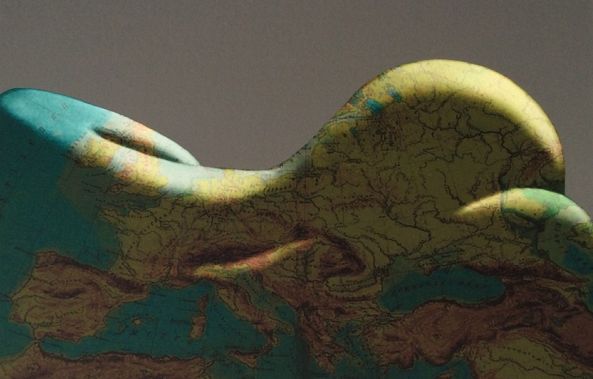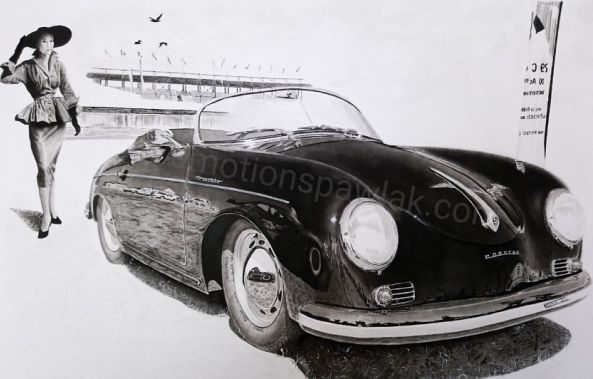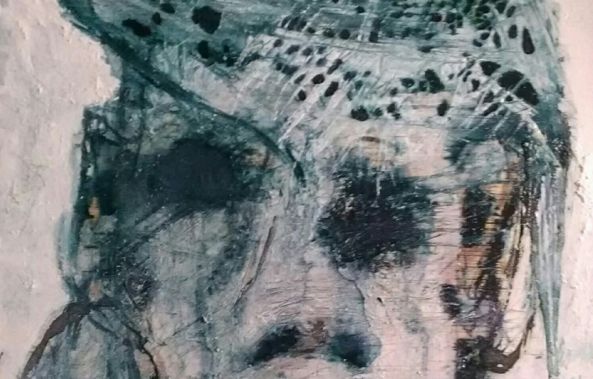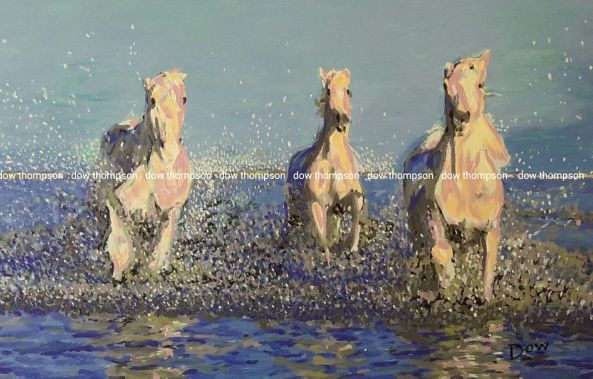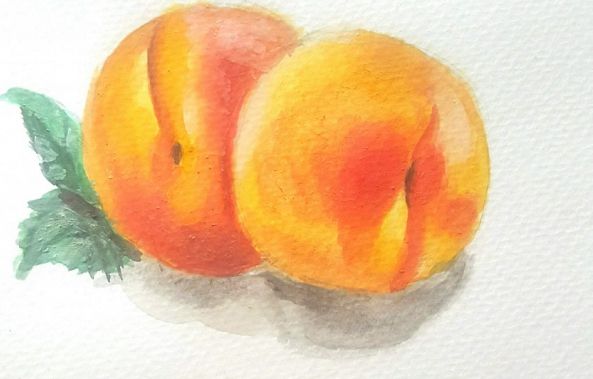Jan van Eyck: biography, famous paintings
Jan van Eyck is widely regarded as one of the foremost members of the Early Renaissance period. Only around 20 paintings still exist that can confidently be attributed to him, but he also painted alter pieces and miniatures in manuscripts. He was famous throughout Europe, but particularly so in the Netherlands, his place of birth.
He was a widely influential artist, and painted a variety of religious and secular works. He is often praised for his unique and cutting-edge use of oil paints, which have held their color incredibly well and have needed little restoration. Jan van Eyck is famous for works including the Ghent Altarpiece, The Arnolfini Portrait, and the Madonna of Chancellor Rolin. His work had a massive impact on the Renaissance period, and his style was picked up and refined by other early painters.
Jan van Eyck Biography
Early life
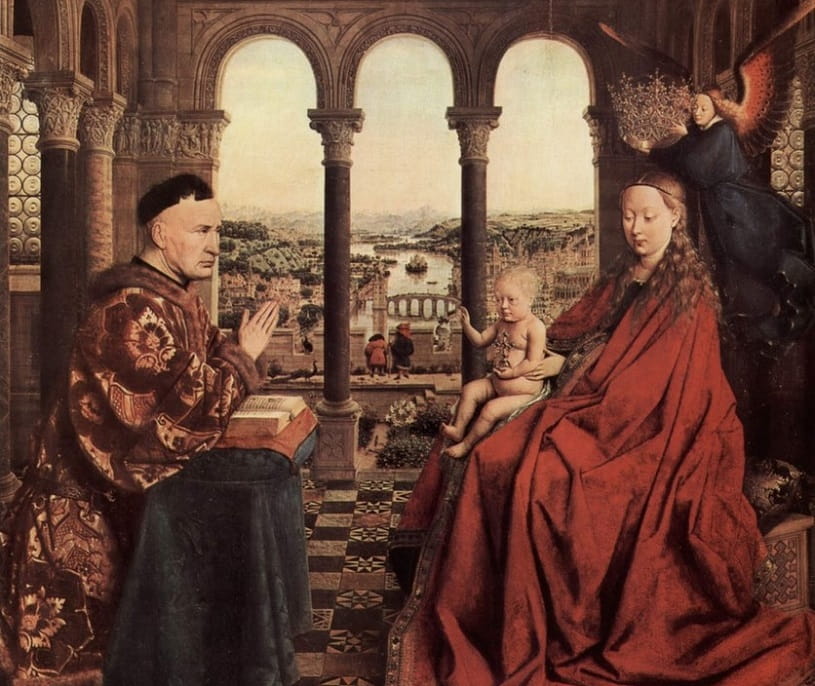
Image via http://www.worldsbestpaintings.net
Very few historical records have survived from the 14th century, and so unsurprisingly no one knows exactly when the artist was born. It’s believed he was born between 1380-1390 in a town called Maaseik in the Netherlands. There don’t appear to be any records about Jan van Eyck’s parents, although it is known that he had a sister and possibly two or more brothers. Historians don’t even know where van Eyck learnt his craft, or who educated him.
The first real records of the painter start around 1422, when he was recorded as the court painter at The Hague during the rule of John of Bavaria. By this time he was already recorded as a master painter, and had two assistants, which implies he was in a position of authority and power. As the court painter he was given a small workshop, his assistants, and probably quite a reasonable salary.
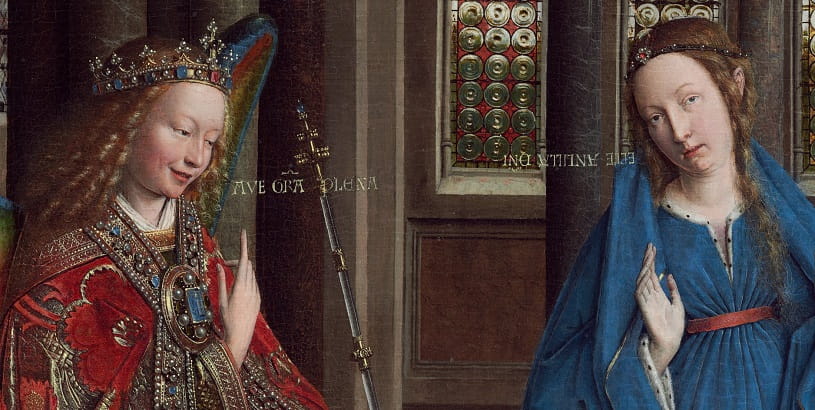
Image via wikipedia.org
During his time as court painter, van Eyck was involved in redecorating John of Bavaria’s palace, the Binnenhof, in The Hague. There is next-to-no surviving work from this period of his life, however historians believe he may have been the artist responsible for a miniature in the Turin-Milan Hours, an early manuscript. If so, this would be the only piece of work in existence from his time in John’s court.
John died in 1425 and so van Eyck moved to Bruges, and was soon spotted by Philip the Good, Duke of Burgundy. Jan van Eyck’s accomplishments didn’t really start until he was settled in Philip’s court, and this is also when historical records about him become more accurate. He was given a salary, which meant he could focus on his own work rather than commissions, and so was able to refine his style and talents in relative freedom.
Success

Image via https://commons.wikimedia.org
Jan van Eyck was able to come into his own as an artist during his time in Philip’s court. He was considered a revolutionary by his peers and patrons, and his style was heavily copied by other painters. He was highly praised for his ability to show his subjects in a state of dignity, but also for still showing their flaws. In 1429 he painted Philip’s bride to be, and contemporary sources say that the now-lost painting wasn’t attractive.
The high point of van Eyck’s career is considered to be between 1436 and 1438, during which time he produced some of his most famous pieces. These include Lucca Madonna, Virgin and Child with Canon van der Paele, and Annunciation. By this point he had already made a name for himself with works such as the Ghent Alterpiece, and The Arnolfini Portrait. It was also during this time that he developed his technique with oil paints, and worked on new methods of mixing the pigments.
Not much is known about the painter’s wife, Margaret van Eyck, including their marriage date. It’s believed they married sometime around 1432, and she was considerably younger than van Eyck. He painted her portrait in 1439, and art historians have concluded Margaret was an aristocrat, but was of lower birth. This theory is based on her clothing in the painting, which is good quality and modest, but isn’t as regal and fashionable as clothing worn in van Eyck’s paintings of high nobility.
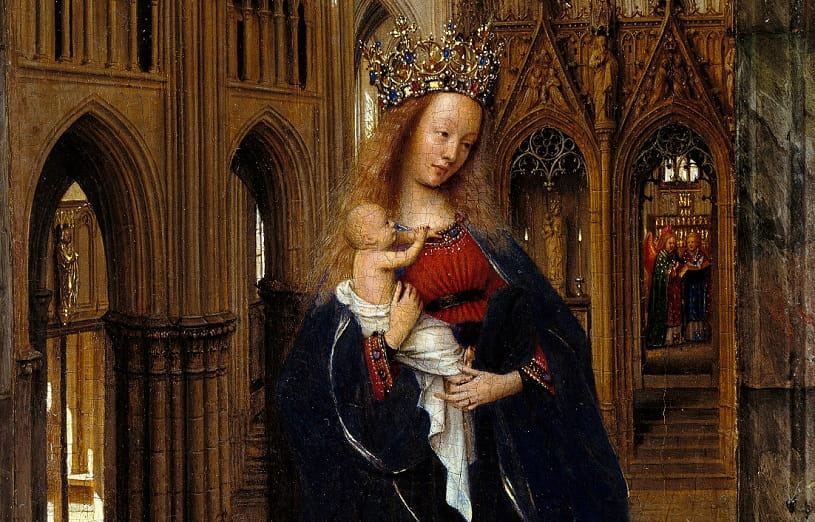
Image via https://en.wikipedia.org
Early 15th century records are few and far between, and their purpose wasn’t necessarily to record quotes from artists. The only thing we really have in the way of a quote from the painter is his signature. Out of the 20 surviving pieces of his work, 10 are signed with the phrase “ALS IK KAN,” which translates as “As I (Eyck) Can. This signature is a pun on his name written in Greek letters.
He also carved different phrases into the frames of his paintings. He considered the frame to be more important than previous painters, and so he attempted to bring them and the painting together. Two examples of the messages he left on frames are “I do as I can” and “United with its frame.” The second quote shows van Eyck’s desire to connect the frame and painting in some way. It’s believed there were other quotes left on frames, but unfortunately these have been painted over.
Death
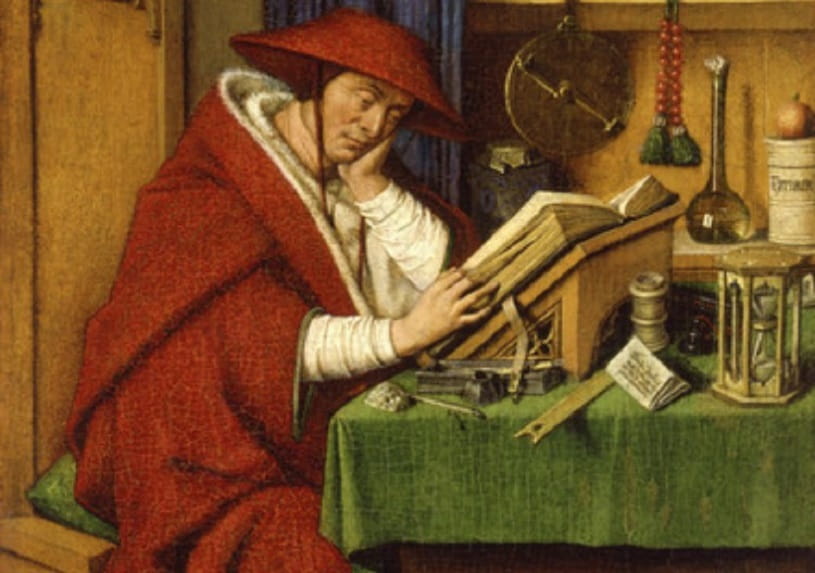
Image via https://www.1000museums.com
The artist died in 1441, at a reasonably young age, even for the 15th century. He was buried at the Church of St Donatian in Bruges, but his body was exhumed in 1442 and placed in St Donatian’s Cathedral, which was part of the same church. Margaret van Eyck was given a modest pension based on the artist’s annual salary, which she used to support herself and their two children.
Van Eyck left many unfinished works that were completed by the journeyman at his workshop, Lambert van Eyck. Lambert ran the workshop after his master’s death, and helped to build van Eyck’s status and legacy. He was mentioned by several sources throughout the 15th century as an artist of great talent, and his work has been appreciated ever since.
Jan van Eyck famous paintings
The Arnolfini Portrait – 1434

Image via https://www.cineclubdecaen.com/
Jan van Eyck’s Arnolfini wedding portrait is one of his best-known works. It’s oil paint on oak wood, with the board made of three separate panels joined together. It depicts Giovanni di Nicolao Arnolfini and his wife stood in the bedroom of their home. The painting is considered one of the most complex and original pieces in Western art due to its use of perspective, color, and iconography. It is one of the oldest surviving paintings done in oil as opposed to tempera. The painting is currently on display in the National Gallery, London.
The Ghent Altarpiece – 1430-1432
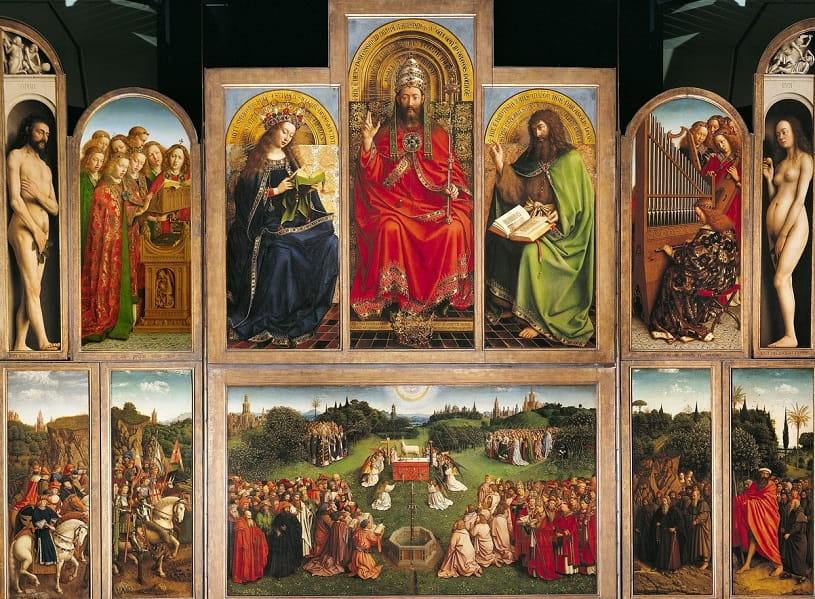
Image via https://www.npr.org
This is a very large and complicated altarpiece, consisting of 12 individual panels. There are two vertical panels, each of which has double folding wings containing the rest of the paintings. It’s believed to have been designed by Jan’s older brother Hubert during the 1420s, and then painted at the beginning of the 1430s. The panels all consist of religious imagery, including Christ the King, the Virgin Mary, and Adam and Eve. The paintings are all richly colored and highly detailed, which contrasts against the images on the outside of the shutters. These are done in earthy tones with relatively little detail. This was likely to increase the wow factor of the shutters being opened. The altarpiece is still on display in St Bavo’s Cathedral in Ghent, Belgium.
Portrait of a Man – 1433
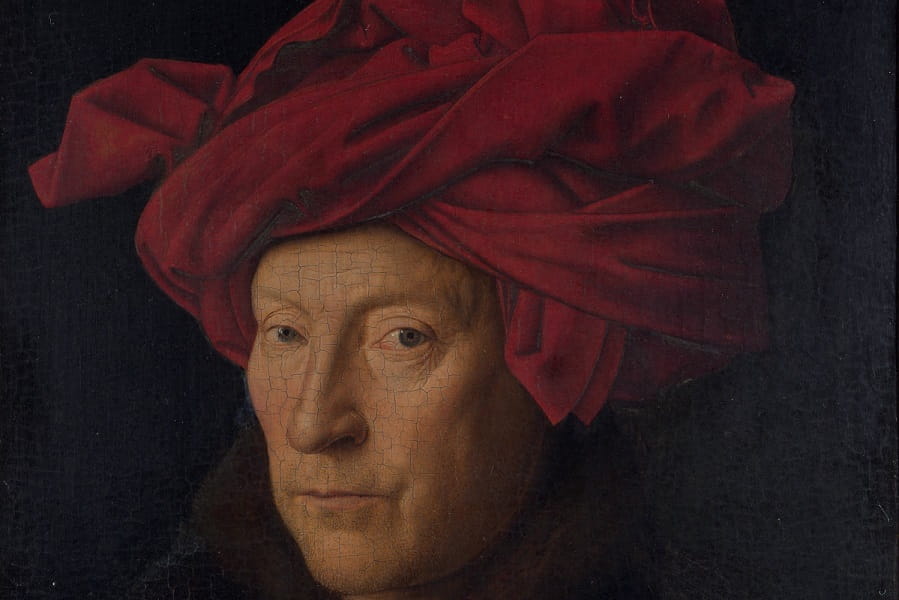
Image via wikipedia.org
This piece depicts a man wearing a chaperon, which was a type of hat popular at the time. It’s believed to be Jan van Eyck’s self portrait for several reasons. Firstly, the artist’s signature is displayed on the frame, but is considerably larger than usual. Considering his signature is “As I can,” this has led historians to believe it is the artist himself. Also, the subject’s gaze is more direct than usual, which can imply a self-portrait.
Style
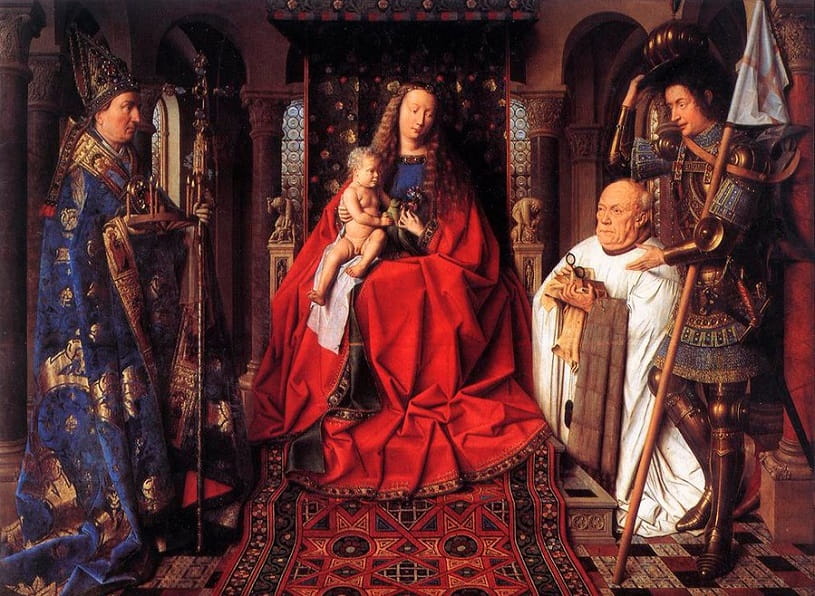
Image via http://rijksmuseumamsterdam.blogspot.com
Jan van Eyck is considered to paint in the Early Renaissance style, specifically Early Netherlandish. His work is characterized by his amazing attention to detail, and his mix of religious and secular subject matter. He is also known for his ability to give the impression of natural light, which he managed through his use of oil paints and glazes.
His style is also marked by his knowledge of nature and use of symbolism. In The Arnolfini Portrait, he uses various markers to symbolize marriage, faith, loyalty, and love. He also uses the subject’s poses to show them as equal, rather than the wife being subordinate.
Painting techniques
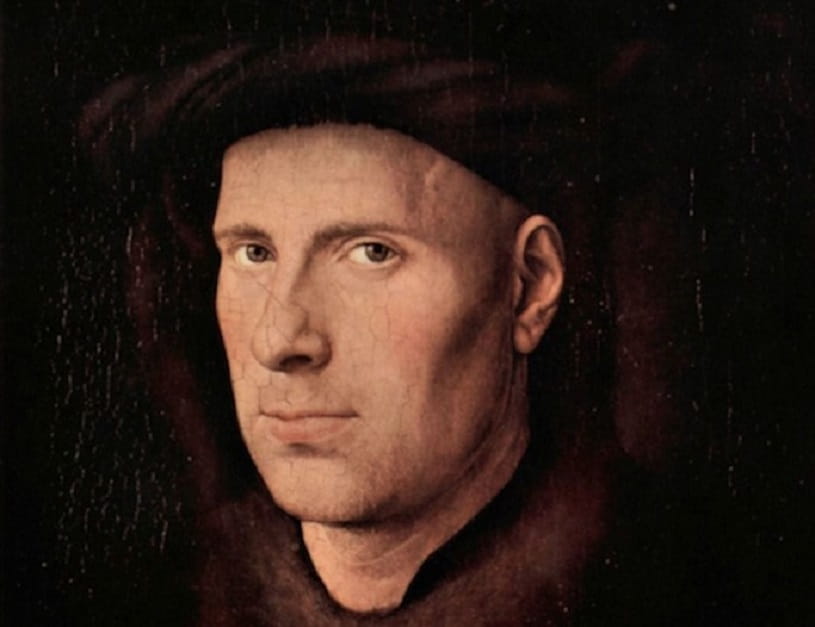
Image via wikipedia.org
The artist’s painting style was quite unique at the time. His favored method of painting was to start with a line drawing and then paint in areas of light and shade using bone black and lead white. He would then use oil paints to build up thin layers of translucent color over these base layers. This technique meant he could achieve much more vibrant colors, and a higher level of detail. Once he had finished the layers of color, he would then add in more shadow and light, and refine the details. His technique was considered pioneering at the time, which is why so many artists adopted it.
Did Jan van Eyck invent oil painting?
The short answer is no. The technique of cutting pigments with oil had been used for some time before the artist came along, although it wasn’t very popular. This fact was incorrectly attributed to him some time in the 16th century, and has long been disproved. Jan van Eyck’s oil painting techniques were revolutionary, which could be a reason for the misinterpretation.
Van Eyck would make his paints by mixing heat-bodied linseed oil with pigments. Heat-bodied oil means it has been gently heated, causing the oil to start turning into a solid. This made it much easier to paint with, and gave the colors a beautiful glow and warmth. It also meant he could create glazes to build up layers of color. This technique has helped the paintings to survive for almost 700 years with very little restoration work.
Workshop, lost and unfinished works
Jan van Eyck had a workshop throughout his time in Philip’s court, and it would have been the place where he painted most of his works, and where he taught his apprentices. It’s believed that either his wife of brother took over the workshop after his death in 1441 so that any unfinished pieces could be completed. This wasn’t unusual, especially if an artist had unfinished commissions. The pieces were completed by his current and former students.
Famous unfinished works at the time of his death
The Crucifixion and the Last Judgement c.1430-1440
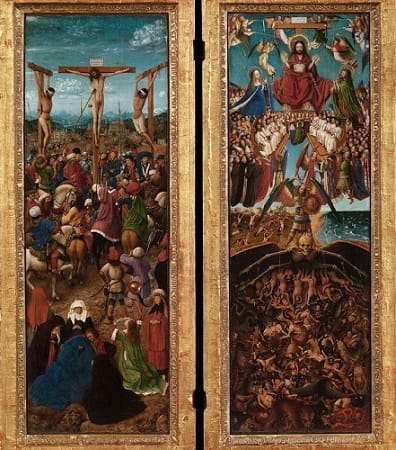 |
 |
| Image via https://www.metmuseum.org | Image via https://www.1000museums.com |
This piece is made of two small wooden panels attached with hinges, and is called a diptych. Not much of the piece had to be completed by his students, as it was mainly finished when van Eyck died. There is speculation among some art historians that the panels were meant to be part of a triptych, and that the middle panel has been lost. The left-hand panel depicts the Crucifixion, and the right-hand panel depicts the Last Judgement. Some believe the middle panel would either have been the Nativity scene, or the Adoration of the Magi.
Saint Jerome in his Study – 1442
The painting is dated the year after the artist’s death, and so must have been finished by someone else. Much of the work was likely done by van Eyck, but some areas are clearly done by a painter with a lower skill level and less unique style.
Portrait of Isabella of Portugal - 1428
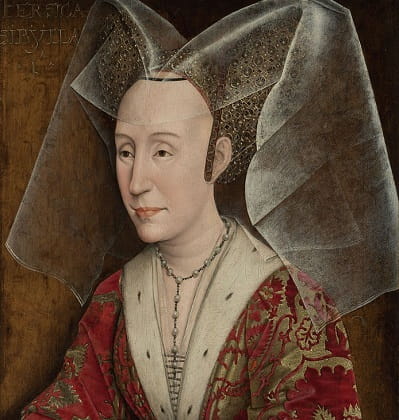 |
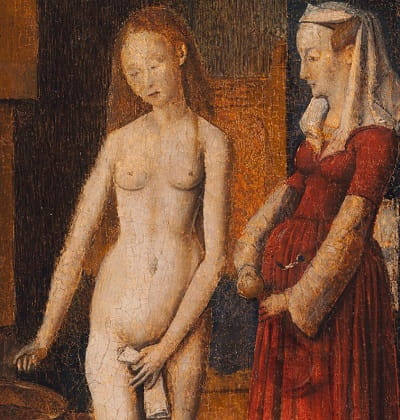 |
| Image via https://en.wikipedia.org | Image via https://en.wikipedia.org |
The original of this painting has been lost to history, and we only know about it through copies. It can be confidently attributed to the artist because his trip to Portugal to paint Isabella was widely documented by contemporary sources. The copies even reproduced the two faux frames that van Eyck painted on, one of which had an inscription on it.
Woman Bathing – late 1420s
Two copies of this painting were made around the end of the 15th century, and this is the only way we know about this picture. It depicts a naked woman having a sponge bath, accompanied by a maid. There are several similarities with the pose and setting of The Arnolfini Portrait, which is how historians can be so confident the original was done by van Eyck.
Contributions to Renaissance art
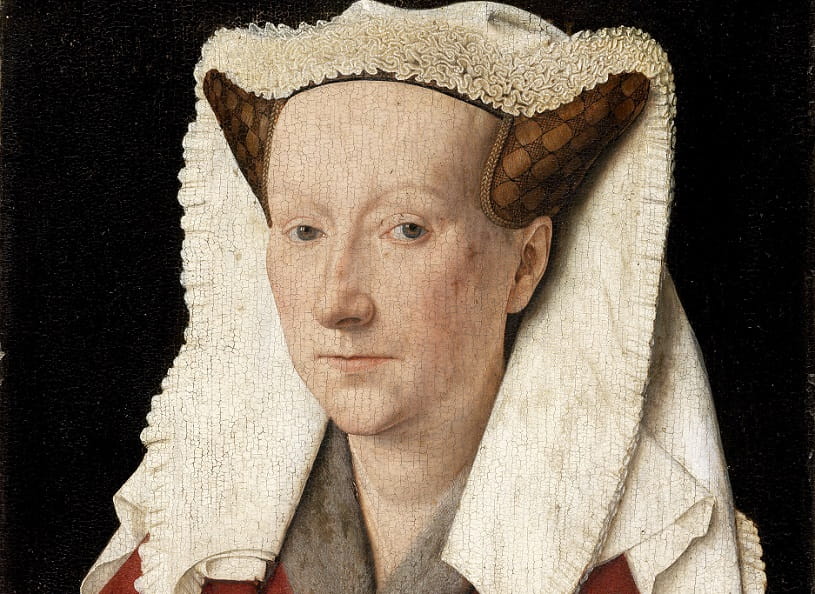
Image via https://en.wikipedia.org
Van Eyck was widely regarded by contemporary sources as being a huge influence on Renaissance painters. His techniques with oil paints were copied by many artists, and influenced the general style of Renaissance paintings. His use of color, pose, perspective, and natural light were all hugely influential too. Most notably though was van Eyck’s use of symbolism in his works. This wasn’t anything new, but he made such a point of putting as much symbolism as possible into a painting. For example, in the painting of Saint Jerome the subject is surrounded by books and sophisticated instruments, which were all symbols of the idealized Renaissance man.
Overall, Jan van Eyck was a very successful and influential artist, whose techniques had a massive impact on the style and quality of Western art. In particular, his attention to detail and ability to accurately capture reality were widely praised by both historical and contemporary sources. Although other artists may have produced more work in their lifetime, few can attribute such an influence over artistic practices as Jan van Eyck.



